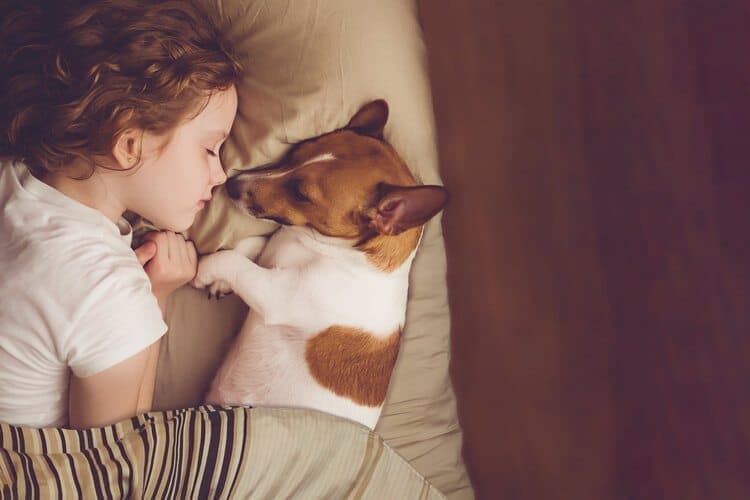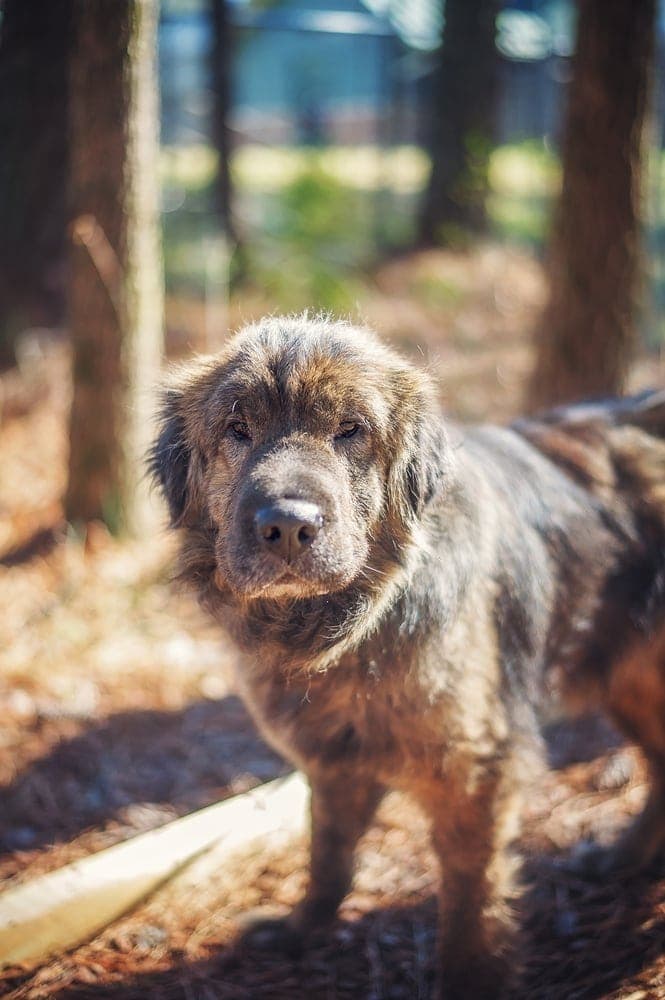Teacup Bichon Frise: Pictures, Temperament & Traits
By Jordyn Alger
Updated on
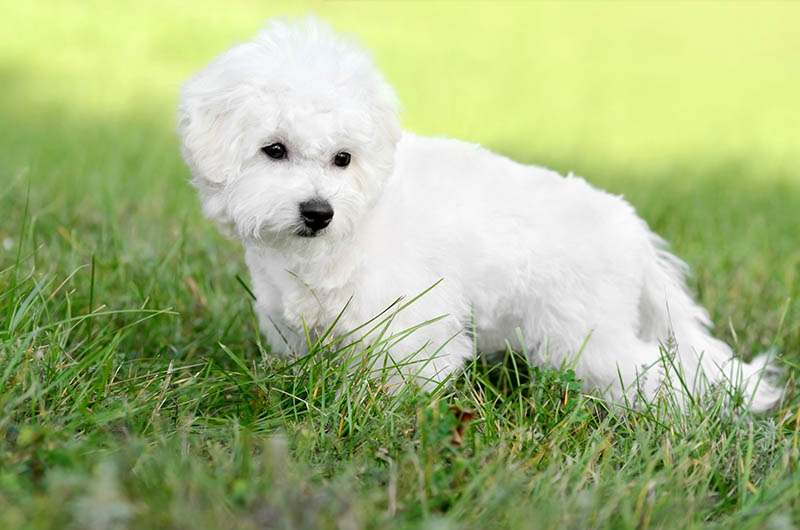
If you’re looking for a tiny yet resilient dog, the Teacup Bichon Frise may be exactly what you want. These small yet sturdy pups are known for their dazzling personalities and have relied on their charm and good nature for generations. Some consider the Bichon Frise a canine comedian, due to their intelligence and excellent humor. There’s so much more to this loving breed than just personability, and this article aims to capture it all.
| Height: | 4–6 inches |
| Weight: | 4 pounds or less |
| Lifespan: | 14–15 years |
| Colors: | White, white and apricot, white and cream, and white and fawn |
| Suitable for: | Families with children, households with other pets, first-time dog owners, people with allergies, apartment living |
| Temperament: | Affectionate and outgoing, playful, energetic, and eager to please |
The Teacup Bichon Frise is a tinier version of the standard Bichon Frise that carries many of the same qualities as its larger counterpart. These miniature balls of fluff have big personalities and love nothing more than to be with their most treasured companions. Their natural affection and desire to please make them excellent pets; however, there are some health concerns to be aware of. To ensure the Teacup Bichon Frise is the right pup for you, keep reading.
Teacup Bichon Frise Breed Characteristics
Teacup Bichon Frise Breed Puppies
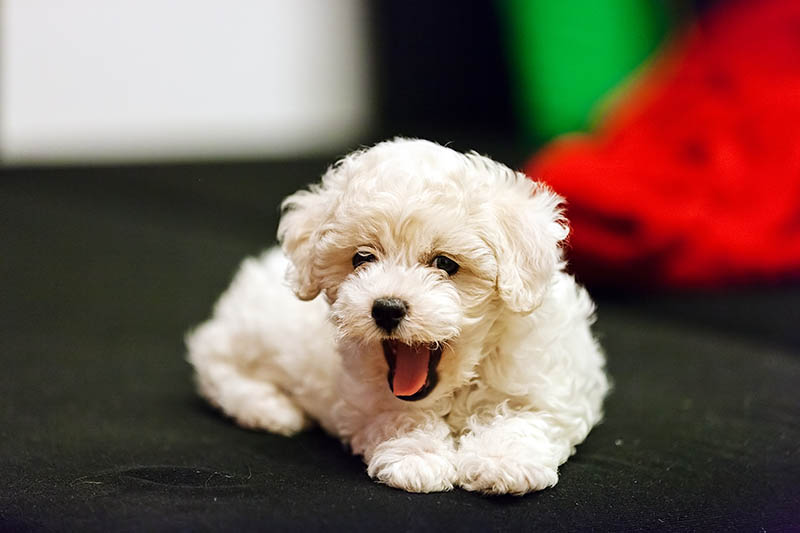
Teacup Bichon Frise puppies will not be easy to find, nor will they come cheap. They are rarely available in animal shelters. However, if you can find a Teacup Bichon Frise in your local animal shelter, providing a home for a lonely puppy is always ideal. In this instance, your Teacup Bichon Frise will only cost as much as the adoption fees at your local shelter.
In most cases, you must contact a reputable breeder to find a Teacup Bichon Frise. Untrustworthy breeders should be avoided, as the chances of your Teacup Bichon Frise being born with concerning genetic issues may increase without a responsible breeder’s care and oversight. Since the Teacup Bichon Frise is not an official breed registered with the American Kennel Club, prices can be difficult to deduce.
Temperament & Intelligence of the Teacup Bichon Frise
Are These Dogs Good for Families? 👪
If you are looking for a good family dog, the Teacup Bichon Frise has a lot to offer. It is friendly, affectionate, and excellent with children. However, the small size of the Teacup Bichon Frise makes it delicate. If younger children in the home have not yet learned how to be gentle with animals, the Teacup Bichon Frise will not be a good fit for your family.
Does This Breed Get Along with Other Pets?
The Teacup Bichon Frise gets along with other pets as long as they have been properly socialized and introduced. Since they are so small, they can make ideal housemates for cats or other tiny pets. On the other hand, a household with large dogs may not be appropriate for the Teacup Bichon Frise.
Things to Know When Owning a Teacup Bichon Frise:
Purchasing a Teacup Bichon Frise from a reliable source is only part of the adventure of owning a dog. Below, we’ll examine the dog’s food and diet requirements, exercise needs, training requirements, and much more.
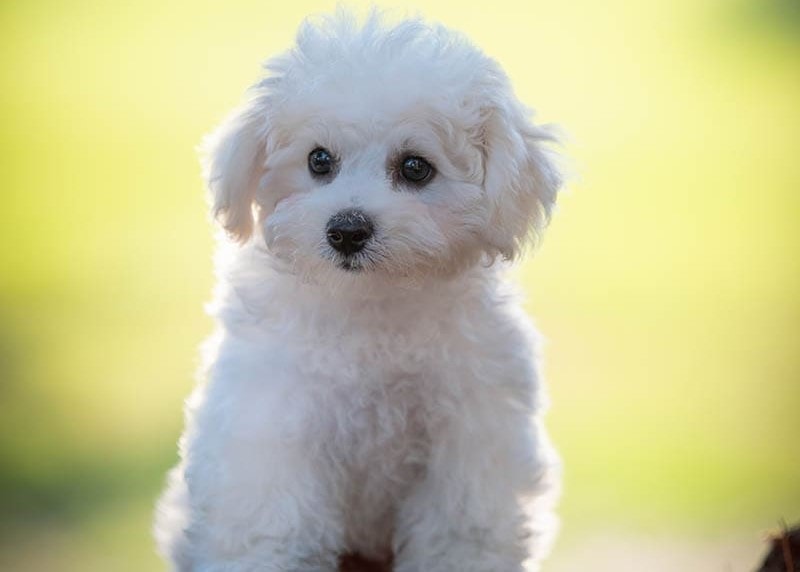
Food & Diet Requirements 🦴
The Teacup Bichon Frise will thrive on high-quality food. Since the dog is so small, it may be worthwhile to feed him a small-breed dog food formula. Regardless, you will want to ensure that his diet corresponds with his age by feeding him puppy food as a puppy, adult food as an adult, and senior food as a senior.
Exercise 🐕
The Bichon Frise is a moderately active dog, and the Teacup Bichon Frise is even less so. Although the Teacup Bichon Frise has plenty of energy, he can only use it for so long before his little legs tire out. Daily play sessions and adequate time in an enclosed outdoor space should be enough activity for your Teacup Bichon Frise. The Teacup Bichon Frise is deceptively quick and can rush off in the blink of an eye. Because of that, you’ll need to keep a close eye on your Teacup Bichon Frise at all times.
Training 🎾
You will likely find that the Teacup Bichon Frise is eager to please, making it easy to train. They are intelligent dogs that respond well to praise and rewards, making it easy to teach them new tricks. However, the Teacup Bichon Frise has a reputation for being difficult to housetrain.

Grooming ✂️
The Teacup Bichon Frise has a lovely hypoallergenic coat, making it an ideal companion for those with dog allergies. However, maintaining such a luxurious coat requires extensive grooming. The dog needs to be brushed daily and requires monthly nail trimming and bathing. Although this may sound like a lot of work, remember that the Teacup Bichon Frise is incredibly small. So, there isn’t much hair to brush.
Health and Conditions 🏥
As with any breed, the Teacup Bichon Frise has its own health concerns, but some are more serious than others.
Serious Conditions:
Since the Teacup Bichon Frise is a result of encouraged dwarfism, your Teacup Bichon Frise will technically have achondroplasia. If your Teacup Bichon Frise inherits the condition from a responsible breeder, it is unlikely to cause too many issues. However, there are instances where achondroplasia may become a problem and lead to stunted growth in other areas. Signs that your dog may have achondroplasia include an abnormally large head, irregular bone shape, poor growth, bowing of legs, and spinal deviation.
Cushing’s Disease (hyperadrenocorticism) is another possible concern. It is a condition in which your dog’s adrenal glands produce excess cortisol or stress hormone. The hormone is associated with your dog’s fight-or-flight response. Signs include excessive urination and thirst, and since it often occurs alongside the natural aging process, many owners mistake it for a sign of aging. As a result, Cushing’s Disease is often underreported.
Minor Conditions:
A luxating patella is another condition your Teacup Bichon Frise may suffer from. In simpler terms, it is a dislocated kneecap. The severity of the disease can vary, and occasionally there can be long-term consequences. However, the prognosis is usually very good, and the recovery rate is rapid compared to other diseases.
Various eye conditions can also inflict your Teacup Bichon Frise. Conditions like cherry eye, conjunctivitis, and glaucoma are common in several breeds, including the Teacup Bichon Frise.
Male vs Female
Overall, there are few differences between the male and female Teacup Bichon Frise. Character differences between individual dogs will most often come down to personality rather than gender. However, there are some physical differences between males and females, and females tend to be slightly smaller on average than males.
3 Little-Known Facts About the Teacup Bichon Frise
1. They Have a Noble History
Since the Teacup Bichon Frise is not an official breed, there is not much history to discuss. However, its connection to the Bichon Frise provides plenty of interesting facts, considering that it has noble historical roots.
Starting in the 13th century, the Bichon Frise was closely linked to European nobles. The dog was beloved by nobles in Spain, France, and Italy, and its popularity increased during the Renaissance.
2. The Bichon Frise Is Connected to Other Small Dogs
The Bichon Frise is connected to other breeds such as the Bolognese, Maltese, and Havanese. Collectively, this group is known as the Barbichon type. It is understood that the modern development of these dogs began in Tenerife, one of the Canary Islands. One such dog was so popular that it was known as the Bichon Tenerife, which is a notable ancestor of the modern Bichon Frise.
3. The Bichon Frise Fell on Hard Times
Since the Bichon Frise was closely connected to the nobility, the French Revolution in 1789 was not a good time for the dog. Until then, the Bichon Frise had spent much of its existence being pampered in luxury. However, the dogs were left to fend for themselves in the streets.
Street entertainers recognized the Bichon Frise’s intelligence and began training them to do remarkable tricks. Soon enough, the Bichon Frise was rebranded as a circus performer.
Final Thoughts
The Teacup Bichon Frise has many great qualities that make it a phenomenal companion. It is charming, eager to please, and adorable. They are energetic but do not require much exercise and are wonderful to train. As an added bonus, the dog’s luxurious coat is hypoallergenic.
The Teacup Bichon Frise is a great companion for first-time dog owners, families, and multi-pet households. They thrive in large houses or small apartments, so your home’s size is a non-issue. This adaptable little dog is perfect for any living situation, as long as the environment is safe for such a tiny little dog.
If you think the Teacup Bichon Frise is the right fit for you, research responsible and reputable breeders in your area or visit your local animal shelter to find your newest canine companion.
Related Read:
- Doberman vs. Great Dane: How Do They Compare? (With Pictures)
- Red Doberman: Pictures, Facts & History
Featured Image Credit: Chizhevskaya Ekaterina, Shutterstock






